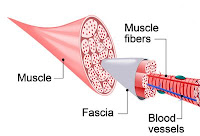Foam Rolling and How To Choose One
Foam Rollers: hot topic, great for runners, awesome for tight IT Bands, but how much does the average person know about how to use them, let alone which one is best for their needs? When you go to the sports store, you find at least 6 different types of these self-inflicted torture devices, all with various labels, from different companies that you have never heard about. So how do you know which one to choose? All foam rollers can be broken down into three categories: Beginner, Intermediate, and Advanced. From Left to Right: Advanced, Medium, Beginner Find The Right Foam Roller For You Beginner Beginner foam rollers can be easy to spot. They are smooth all around and decently soft. This allows the person using them to ease into the foam rolling world. The amount of pressure applied to the body while rolling will be spread out over the entire area, which means less tenderness when rolling. This is a great starting spot to help you learn proper rolling techniq...

